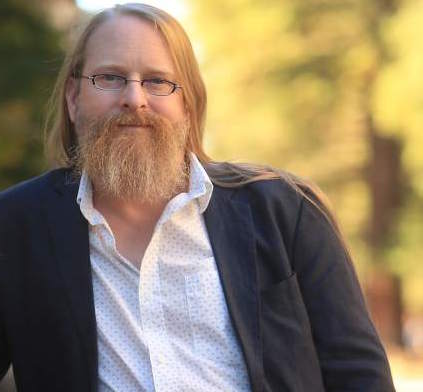
Project Censored publishes a number of articles every year. State of the Free Press, an in-depth look at the year’s best independent journalism, centering voices and topics marginalized by the establishment press. Each volume features the project’s list of the year’s most important but underreported news stories. In addition, the book provides critical analysis of the junk food news served by the establishment media and the prevalence of “news abuse.” It also revisits previous years’ top 25 stories and shares the inspiring examples of media democracy in action. Here are the top 25 lists. State of the Free Press 2022 includes topics such as how “climate debtor” nations have colonized the atmosphere, the way Pfizer bullies South American governments over the COVID-19 vaccine and the scant coverage of the historic wave of wildcat strikes for workers’ rights.
State of the Free PressThis issue is edited by Andy Lee Roth, and Mickey Huff. Roth is the coordinator of Project Censored’s Campus Affiliates Program, which brings hundreds of professors and students at colleges and universities across the U.S. together in a collective effort to identify each year’s most underreported news stories. Huff is the project’s director and president of the nonprofit Media Freedom Foundation. Roth and Huff were asked by us to share their thoughts about what important news is overlooked and why.
Peter Handel – How does Project Censored choose its top 25 mostcensored stories each calendar year?
Andy Lee Roth The aim of the project’s annual top 25 story listIt is to inform the public of news stories that are extremely important but have been ignored, distorted, or marginalized by the corporate media. It also celebrates the hard work of independent journalists who have contributed to the public’s knowledge about these stories.
The production of the project’s annual top 25 story list is a year-long process that involves several hundred people and at least five distinct rounds of review and evaluation. Candidate stories are nominated by college students participating in the project’s Campus Affiliates Program and interested community members. Once stories are identified, they’re vetted by students and faculty mentors for newsworthiness and credibility, transparency of sourcing, corporate news coverage, and newsworthiness. If a story fails to meet one of these criteria, it’s deemed unsuitable and is excluded from further consideration.
Once Project Censored has received the candidate story, we conduct a second round evaluation using the same criteria, and updating the review to reflect any corporate news coverage. Stories that pass this stage of review are posted on the project’s website as Validated Independent News stories (or VINs).
Each year, we present all eligible VINs for the current academic cycle to the faculty, students, and staff of our affiliate campuses. We also present them to our panel, which votes to narrow the candidate stories down to a few hundred.
The stories that make it to the shortlist are subject to another round, intensive review. Those that pass muster are then sent to our panel, who votes to rank them numerically. The resulting tList of stories op 25 is featured in Project Censored’s annual book, on our website and by independent news weeklies across the country.
Let us know a few examples from independent news stories that will be featured on the 2020-2021 story listing.

Andy Lee Roth One of this year’s top stories is the historic wave of wildcat strikes: Payday Report, an independent news outlet that focuses on labor issues, has reported more than 1,750 wildcat strikesSince March 2020. Corporate media have by and large failed to “connect the dots” on the scope of these protests. In fact, until October 2021, when the corporate media began to cover “Striketober,” corporate news framed worker protests during the pandemic as sporadic, isolated events. Overall, corporate news media do a poor job of Coverage of labor issues.
This year’s number two story, “Journalists Investigating Financial Crimes Threatened by Global Elites,” focused on a report by the U.K.-based Foreign Policy Centre about the threats faced by journalists investigating financial misconduct by wealthy individuals and international corporations. Reporters from 41 countries claimed that they were subject to defamation lawsuits. They also reported being targeted by social media smear attacks, trolling online, and even physical violence when investigating financial crimes. Although the Foreign Policy Centre’s report received some attention from corporate news media outsideOur research in the United States found that as of July 2021, no major broadcast or commercial newspaper had even mentioned the report. This is especially concerning because threats to journalists undermine freedom, and jeopardize democratic societies’ health.
There are many other stories that have been added to this list. LimitedCorporate news coverage is important, but it is not proportional to its importance. Example: Story number 19, about Europe’s hunger for biomass fuel made from American forestsOne example was about, New York Times The article was published by the Guardian, but no other corporate news outlet has published an op-ed about the issue. The harvesting timber for biomass fuels has caused toxic air pollution and devastating flooding along the southern coast of the United States. However, most Americans don’t know this because the establishment media have not covered the issue.
In State of the Free Press 2022,You discuss disturbing attacks on the media, both at home as well as abroad. What were the main challenges to a free media in 2020-2021

Mickey Huff:The COVID-19 Pandemic is the greatest threat to journalistic integrity. However, it is not the only one. The pandemic has caused severe damage to all sectors of American society, including journalism. The Poynter Institute will close its doors in December 2021. reported that more than 100 local news outlets have closed since the beginning of the pandemic — a terrible loss that accelerates the spread of “news deserts,” communities and regions where there is no local news coverage at all. Project Censored documents how conservative-leaning corporate outlets enter these communities. exploit the need for local news.
But the threats to journalism aren’t limited to the pandemic. Journalists in the United States are increasingly at risk from assaults, arrests, and other threats. The U.S. Press Freedom Tracker described 2021 as “another record year” for press freedom violations in the country, and documentedThere were 142 attacks on journalists, 59 arrests, 59 detentions, 23 subpoenas to journalists or news organizations, 36 instances of equipment being damaged or destroyed, and a total of 59 arrests. For these and related reasons, the United States ranked just 44th of 180 countries in Reporters Without Borders’s 2021 World Press Freedom Index, which identified the “disappearance of local news” and “ongoing and widespread distrust of mainstream media” among the “many chronic, underlying conditions” impacting press freedoms in the United States.
Big Tech is a third threat to journalistic integrity. The impact of the internet, and the growing influence of social media, cannot be overstated. “Google may not be a country, but it is a superpower,” Timothy Garton Ash noted in his book, Ten Principles for a Connected Future: Free Speech. The new media giants — including Alphabet (which owns Google and YouTube), Meta (which owns Facebook, Instagram and WhatsApp), Twitter, Apple and Microsoft — function as arbiters of public issues and legitimate discourse, despite their leaders’ assertionsThey are tech platforms, and not media companies or publishers.
Andy Lee Roth wrote that these tech giants are the new gatekeepers and their proprietary algorithms “determine which news stories circulate widely, raising serious concerns about transparency and accountability in determinations of newsworthiness.” Accountability and transparency are guiding principles for ethical journalism. But news gatekeeping conducted by proprietary algorithms crosses wires with these ethical guidelines, producing grave threats to the integrity of journalism — not to mention the likelihood of a well-informed public.
Are there any threats to freedoms of the press that have increased under Trump or have they remained the same since 1976, when Project Censored was started?
Andy Lee Roth: Trump’s presidency exposed (and exploited) chronic malignancies in American society that predated his rise to power. Trump was extraordinary in his zeal to condemn the press as “the enemy of the people” whenever it reported news that failed to flatter him. He seemed opposed to any form of journalism that involved factual reality, with the exception, perhaps, of “alternative” facts, as endorsed by his counselor Kellyanne Conway. It’s difficult to accept that there is no connection between Trump’s provocative rhetoric and subsequent violence and threats directed at journalists, from Rep. Greg Gianforte’s 2017 assault of a Guardian reporter, to the message “Murder the Media” scratched onto a door to the U.S. Capitol during the failed insurrection on January 6, 2021.
But it is misleading — and dangerous — to assume that U.S. journalism was free of faults until Donald Trump weaponized the term “fake news” to serve his own interests. While Trump is entitled to more influence, this position ignores the important structural flaws in corporate media news media. As Project Censored’s Steve Macek and I argued in a November 2020 ArticleFor Truthout, explanations of news bias that trace it back to “the self-interest and partisan bias of editors and journalists — or even aggregates of those individual interests and biases — fail to explain the political power of news or to identify the foundations on which far more fundamental forms of news slant are built.” To understand the establishment media’s deepest biases requires a structural analysis of journalism, including the economic imperatives, institutional constraints, professional values and social relationships that shape the production of every news story. These are the essential building blocks of critical media literacy that Project Censored champions.
A clear-eyed analysis of threats to freedom of the press must look back before Trump’s presidency — not to mention beyond it. The Biden administration does not refer to the press as “enemy of the people,” but it continues in its efforts to ExtraditeJulian Assange. And, although the First Amendment provides protection against “prior restraint” — the effort to Prevent publication or publicization of information or ideas — by the government, in November 2021, a New York State court ordered The New York TimesInformation about Project Veritas is not to be published. This far-right group is well-known for its deceptively edited videos. This was the first time that the U.S. Press Freedom Tracker had observed this. TimesSince 1971, the Pentagon Papers case.
In your book you include a chapter on sensationalized and empty “Junk Food News” that discusses something you call “humilitainment.” What is “Junk Food News,” and how Does it distract us from more substantive reporting?
Mickey Huff: Project Censored began to track Junk Food News after news editors contacted Carl Jensen, the project’s founder, to counter the project’s claim that certain news topics were “censored.” Citing a finite amount of time and space for news reporting, which prevented them from covering every important story, those editors got Jensen wondering: What doWhat do they report? Jensen discovered that the problem was not necessarily lack of time or space for substantive news. It was the quality of the news chosen to fill that time and space. Most of it was, in Jensen’s words, “sensationalized, personalized, and homogenized inconsequential trivia,” for which he coined the now-common term “Junk Food News.”
Today, Project Censored is a collaboration between students and faculty. continue to trackJunk Food News. This year’s chapter investigates the social networking service TikTok as a popular purveyor of junk food news. In particular, the analysis focuses on “humilitainment,” a term developed in 2005 by media scholars Brad Waite and Sara Booker to describe entertainment that capitalizes on someone else’s humiliation. TikTok engages in humilitainment. This is evident by the sensational news coverage of Gorilla Glue Girl. The chapter’s authors show how a fascination with humilitainment obscured more substantive reporting on topics including humanitarian crises in Yemen and Ethiopia, the wave of disproportionately female unemployment propelled by COVID-19, and legislation to restrict voting rights.
